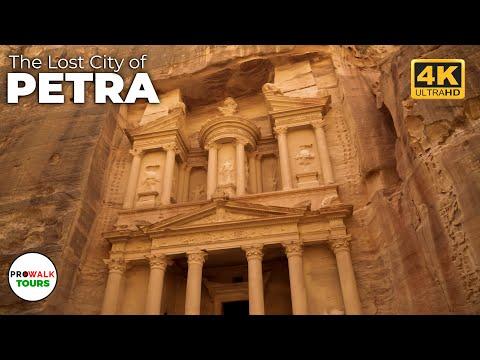I never imagined that my journey to Petra would turn into such an extraordinary adventure. It all started with a simple idea: exploring one of the most iconic archaeological sites in the world. I had read about Petra’s majestic beauty and its rich history, but experiencing it in person was something else entirely. With a camera in hand and excitement in my heart, I embarked on a walking tour that would lead me through the ancient wonders of this lost city.
The tour began early in the morning. The desert air was still cool, and the sky was painted in hues of pink and orange. Our guide, an enthusiastic local named Farid, greeted us with a warm smile and led us towards the entrance of Petra. As we walked, Farid shared stories about the Nabateans, the people who once inhabited this remarkable place. His tales were as captivating as the ruins we were about to see.
The first stop was the Siq, a narrow gorge that serves as the main entrance to Petra. Standing at the mouth of the Siq, I could hardly see beyond its winding path. The towering rock walls, bathed in the early morning light, created a breathtaking corridor that beckoned us to step inside. As we ventured further, the Siq seemed to narrow even more, and the light shifted dramatically, casting eerie shadows that danced on the walls. Farid explained that this natural passageway was carved by ancient watercourses, and it had served as the main route to the city for centuries.
Walking through the Siq felt like stepping back in time. The silence was profound, broken only by the occasional sound of footsteps on the rocky ground. I paused frequently to take in the intricate carvings etched into the walls. Farid pointed out various features, including remnants of ancient water channels and inscriptions that provided clues about the city’s past. Every corner of the Siq seemed to hold a story, a piece of history waiting to be uncovered.
As we emerged from the Siq, the Treasury came into view. The sheer scale and grandeur of this iconic structure took my breath away. The Treasury, or Al-Khazneh, is a magnificent building carved directly into the sandstone cliff. Its intricate facade, adorned with ornate columns and statues, stood as a testament to the craftsmanship of the Nabateans. Farid explained that the Treasury was believed to have been a mausoleum or a royal tomb, but its exact purpose remains a mystery. The sight of it was so overwhelming that I could barely focus on taking photos. I simply stood there, taking in the awe-inspiring beauty of the ancient architecture.
Our tour continued through the heart of Petra, where we explored various other sites. The Roman Theater, with its impressive seating capacity and well-preserved stage, was a highlight. Farid elaborated on the significance of the theater in Nabatean society and how it served as a venue for performances and public gatherings. As I walked around the theater, I imagined the bustling crowds of ancient Petra, gathered to enjoy the spectacle of a dramatic play or musical performance.
We then made our way to the Street of Facades, a row of elaborately carved tombs that lined the main thoroughfare of Petra. The facades, each more intricate than the last, showcased the Nabateans’ artistic skill and their dedication to honoring their deceased. Farid pointed out the various architectural elements, from the grandiose columns to the delicate friezes, and explained how these tombs reflected the wealth and status of their occupants.
One of the most memorable parts of the tour was the climb up to the Monastery, or Ad-Deir. The ascent was challenging but rewarding. The path was steep and rugged, winding its way up through the desert landscape. Along the way, I encountered local vendors selling souvenirs and refreshments, adding a touch of color to the otherwise barren terrain. Despite the difficulty of the climb, the view from the top was worth every step. The Monastery, similar in style to the Treasury but on a larger scale, stood majestically against the backdrop of the desert. Its grandeur and the panoramic view of the surrounding landscape were simply spectacular.
As the day wore on, we ventured to the High Place of Sacrifice, an ancient altar that offered a stunning view of Petra from above. The climb to the altar was a bit strenuous, but the reward was a breathtaking panorama of the city and its surroundings. From this vantage point, I could see the full extent of Petra’s layout, with its rock-cut architecture blending seamlessly into the natural landscape. Farid explained the significance of the High Place of Sacrifice in Nabatean religious practices and how it was used for ceremonial rites.
By the time the tour concluded, I was exhausted but exhilarated. Petra had surpassed all my expectations. The blend of natural beauty and ancient architecture created a magical atmosphere that was both humbling and inspiring. As I walked back through the Siq, the setting sun cast a warm glow over the rock formations, adding a final touch of enchantment to the day.
Reflecting on the experience, I felt a deep sense of gratitude. Petra is not just a city of stone; it is a testament to human ingenuity and perseverance. Walking through its ancient streets and marveling at its monumental structures allowed me to connect with a bygone era in a way that few other places could. It was a journey into the past that left an indelible mark on my soul.
